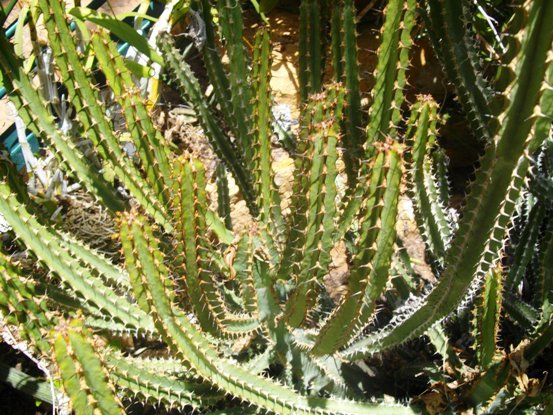Euphorbia zoutpansbergensis

This robust shrub or small tree is multi-stemmed with five to seven ribs to each slender stem (SA Tree No 357). It may reach a height of 5 m. Lower branches will hang down, although the majority curve upwards. Spines are paired, thin, sharp and reddish when young. They are sometimes comparatively far apart on well growing plants in cultivation and the spine ridges are continuous in older plants, not yet on young stems. The cyathia (flowers) on the stem tops in season (spring) are light yellow, small and round. The fruit is three-lobed and green, borne on a long stalk.
The Soutpansberg Mountains where this species is found and for which it is named lie in the north of the country, the Limpopo Province. Euphorbia zoutpansbergensis is rated as near threatened on the IUCN 2.3 conservation status scale of plant species. Every plant or animal moving up the scale towards extinction is a concern to all of us. For protecting the diversity of living things on the planet contributes hugely to the quality of human life and survival (www.euphorbia.de; Coates Palgrave, 2002).

